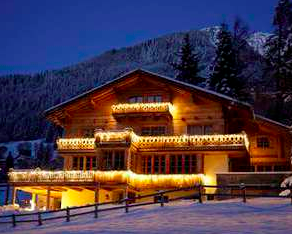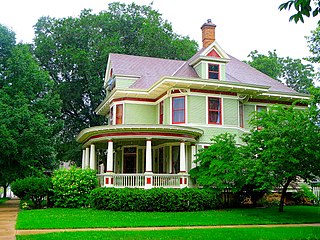 W
WThe Abbaye de la Fille-Dieu is a Cistercian monastery located near the town of Romont in the Swiss Canton of Fribourg. Founded as a Benedictine priory in 1268, and continuously occupied by a community of nuns since its establishment, the alpine abbey is a Swiss heritage site of national significance. Heavily altered through its history, Fille-Dieu was restructured by economic turmoil, fire, additions and unsympathetic alterations. In 1906 the abbey became affiliated with the Trappists, and between 1990 and 1996 an internationally notable restoration was undertaken, modernising the monastic buildings, restoring the abbey church to its original volume, and preserving its rediscovered medieval murals, with the only contemporary element a suite of stained glass windows commissioned from the British artist Brian Clarke. Further restoration of the abbey continues today.
 W
WThe Banner is a playing card used in Swiss-suited cards and which historically formed part of the standard 36- or 48-card German-suited packs. It is equivalent to a 10, being ranked between a 9 and an Unter.
 W
WThe Brünig-Napf-Reuss line forms a geographical boundary in traditional Swiss culture (Kulturgrenze). Running from the Brünig Pass along the Napf region to the Reuss, it partly separates western and eastern varieties of High Alemannic, although some places east of the line belong to the western dialect group. The line runs across the cantons of Lucerne and Aargau.
 W
WThe Chalet Eugenia is a chalet in Klosters which has been used by members of the British Royal Family for over three decades.
 W
WCombat de Reines or Swiss Cow fighting;, is a traditional event held mostly in the Swiss canton of Valais, in which a cow fights another cow . Each year, the Swiss canton of Valais hosts a series of cow fights known as combats de reines, which began in the 1920s and has drawn as many as 50,000 spectators in a year. The winner is called La Reine des Reines and increases dramatically in value. At the end of the year, a grand final is held in Aproz, where the six best from seven districts do battle in six weight categories.
 W
WA cuckoo clock is, typically, a pendulum-regulated clock that strikes the hours with a sound like a common cuckoo's call and has an automated cuckoo bird that moves with each note. Some move their wings and open and close their beaks while leaning forwards, whereas others have only the bird's body leaning forward. The mechanism to produce the cuckoo call has been in use since the middle of the 18th century and has remained almost without variation.
 W
WThe Swiss Agency for the Protection of Cultural Property defines measures to protect cultural property against damage, destruction, theft and loss. For this purpose, a legal basis has been established at the national level and international agreements have been made that oblige Switzerland to respect and support the protection of cultural property not only on its own territory but also on the sovereign territory of other state parties.
 W
WSwitzerland lies at the crossroads of several major European cultures. Three of the continent's major languages, German, French and Italian, are national languages of Switzerland, along with Romansh, spoken by a small minority. Therefore, Swiss culture is characterized by diversity, which is reflected in a wide range of traditional customs. The 26 cantons also account for the large cultural diversity.
 W
WThe Federal Office of Culture (FOC) is an administrative unit of the Federal Department of Home Affairs, based in Bern, Switzerland. The agency has two extensive areas of responsibility: promoting Swiss culture and preserving the country’s cultural heritage. In 2014, its total budget was close to 170 million francs. The FOC promotes culture in the fields of literature, theatre, dance, music, film, the visual arts and design. It helps preserve the cultural heritage by supporting the protection of monuments and archeological research, and it also maintains valuable collections, libraries, archives, and museums.
 W
WGlobi is a Swiss cartoon character occasionally referred to as Switzerland's Mickey Mouse. He is pictured as an anthropomorphic blue parrot with a yellow beak wearing a black beret and a pair of red and black checkered trousers. He was created by the Swiss cartoonist Robert Lips, as an advertising character for the Swiss department store Globus in 1932 for the company's 25th anniversary. He was originally planned to be called "Kimbukku", but later renamed Globi after the local Basel German (Baseldytsch) dialect word for the department store that created him.
 W
WThe Grand Chalet of Rossinière is one of the oldest chalets in Switzerland, dating to the 18th century. It is located in Rossinière and classed as a historic monument. Claude Roy wrote of it:The Grand Chalet, a caravel washed up on a mountain, a Shinto temple... With its architecture in white wood and balconies of lace.
 W
WHeimatschutz is a German word which literally translated means "homeland protection." The Heimatschutz movement arose in the late 19th century in the wake of the Industrial Revolution, with a focus on nature and landscape conservation as well as the care of historic townscapes, cultural heritage and traditions, folklore and regional identity.
 W
WHelvetia is the female national personification of Switzerland, officially Confoederatio Helvetica, the Swiss Confederation.
 W
WThe French word huissier designates ceremonial offices in France and Switzerland.
 W
WJass is a trick taking, Ace-Ten card game and a distinctive branch of the Marriage family. It is popular throughout the Alemannic German-speaking area of Europe (German-speaking Switzerland, Liechtenstein, Alsace part of France, Vorarlberg province of Austria, southwestern Germany, as well as in Romansh-speaking Graubünden and the French-speaking area of Switzerland, German-speaking South Tyrol in Italy, and in a couple of places in Wisconsin, USA.
 W
WThe Jacob Regez Sr. House is a historic house built in 1901 by an important local cheesemaker in Monroe, Wisconsin, United States. It was added to the National Register of Historic Places on January 17, 1980.
 W
WChristianity is the predominant religion of Switzerland, its presence going back to the Roman era. Since the 16th century, Switzerland has been traditionally divided into Roman Catholic and Reformed confessions. However, Christianity has declined considerably since the late 20th century, from close to 94% in 1980 to about 63% as of 2019.
 W
WThe Rütlischwur is the legendary oath taken at the foundation of the Old Swiss Confederacy by the representatives of the three founding cantons, Uri, Schwyz and Unterwalden, traditionally dated to 1291. It is named after the site of the oath taking, the Rütli, a meadow above Lake Uri near Seelisberg. Recorded in Swiss historiography from the 15th century, the oath is notably featured in the play William Tell by Friedrich Schiller (1804).
 W
WSave our Swiss Gold motion is a citizen movement that calls for the Swiss central bank to hold at least 20% of its assets in gold, prohibit selling any gold in future and bring back all its gold reserves to Switzerland.
 W
WSchwingen, also known as Swiss wrestling and natively as Hosenlupf, is a style of folk wrestling native to Switzerland, more specifically the pre-alpine parts of German-speaking Switzerland. Wrestlers wear Schwingerhosen with belts that are used for taking holds. Throws and trips are common because the first person to pin his or her opponent's shoulders to the ground wins the bout.
 W
WThe Schwurhand is a heraldic charge depicting the hand gesture that is used in Germanic Europe and neighboring countries, when swearing an oath in court, in office or in swearing-in. The right hand is raised, with the index finger and middle finger extended upwards; the last two digits are curled downwards against the palm. The thumb is shown slightly curled or raised.
 W
WStudentenverbindung is the umbrella term for many different kinds of fraternity-type associations in German-speaking countries, including Corps, Burschenschaften, Landsmannschaften, Turnerschaften, and Catholic fraternities. Worldwide, there are over 1,600 Studentenverbindungen, about a thousand in Germany, with a total of over 190,000 members. In them, students spend their university years in an organized community, whose members stay connected even after graduation. A goal of this lifelong bond is to create contacts and friendships over many generations and to facilitate networking. The Lebensbund is very important for the longevity of these networks.
 W
WSwitzerland had a standardised suicide rate of 10.7 per 100,000 as of 2015. The actual (non-standardised) rate was 12.5 in 2014.
 W
WThe Swiss Film Archive is a Swiss state-approved noncommercial foundation based in Lausanne.
 W
WSwiss Institute / Contemporary Art New York (SI) is an independent non-profit contemporary art organization founded in 1986. SI is located 38 St Marks Pl, the corner of Second Avenue and St Marks Place in the East Village neighborhood of Manhattan. Exhibitions include visual and performing arts, design, and architecture, with public programs spanning a wide range of topics. SI also has weekly public programming and education classes. Admission is free.
 W
WThe Swiss Inventory of Cultural Property of National and Regional Significance is a register of cultural property in Switzerland. It was established according to article 5 of the second protocol to the Hague Convention for the Protection of Cultural Property in the Event of Armed Conflict, which provides for the establishment of national registers of cultural property.
 W
WThe Swiss National Day is the national holiday of Switzerland, set on 1 August. Although the founding of the Swiss Confederacy was first celebrated on this date in 1891 and annually since 1899, it has only been an official holiday since 1994.
 W
WParts of Swiss German speaking Switzerland have their own deck of playing cards referred to as Swiss-suited playing cards or Swiss-suited cards. They are mostly used for Jass, the "national card game" of Switzerland. The deck is related to the various German playing cards. Within Switzerland, these decks are called German or Swiss German cards.
 W
WTracht refers to traditional garments in German-speaking countries and regions. Although the word is most often associated with Bavarian, Austrian, South Tyrolian and Trentino garments, including lederhosen and dirndls, many other German-speaking peoples have them, as did the former Danube Swabian populations of Central Europe.
 W
WThe Internationaler Sekttag, Weltsekttag or Sekttag is celebrated on 9 April, occasionally also upon other days, mainly amongst German-speaking students and members of German Student Corps and Studentenverbindungen in general.